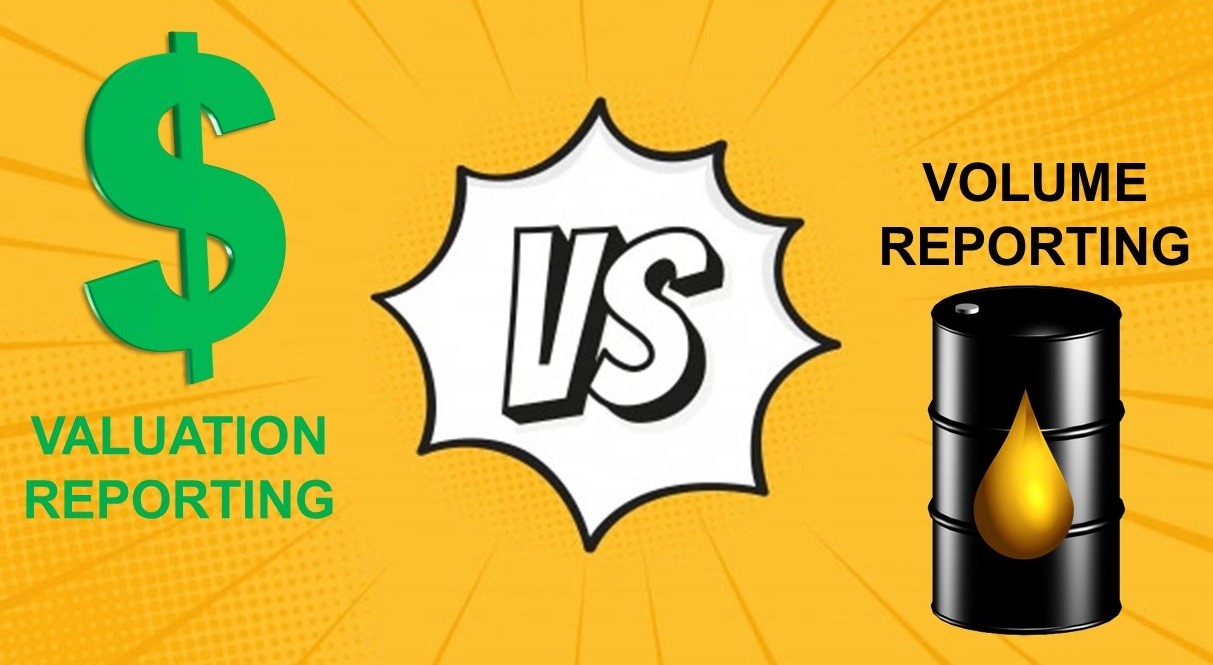Warning
This article and series is specifically targeted for anyone involved or interested in oil and gas reserves reporting guidelines, methods, issues, calculations and pitfalls. Proceed at your own risk!
Introduction
At the conclusion of the year-end reserves process, companies across our industry will have freshly-certified standard reserve reports to reference. As part of the Economic Producibility testing, these reports include economics that generate valuations in the form of cash flows and present values. Additionally, the undeveloped reserves offer calculations of Payout, Investor Rate of Return, and other economic metrics sometimes referenced for Development Plan Commitment tests under the SEC or SPE/PRMS reserves definitions. But is a standard reserve report suitable as a true indicator of an asset’s market value?
Reserve Reports vs Asset Valuations
In our experience, most standard reserve reports are not truly asset/property valuation reports as sometimes presented. Reserve reports often include only Proved Reserves. While there is currently little value assigned to Probable or Possible reserves in this downturn, historically this has not been the case. Even now, while buyers or financiers may not be assigning value beyond Proved Reserves, the upside valuations are still important to ascertain the long-term viability of an asset or ownership. Valuation reports often include Proved, Probable and sometimes Possible reserves, aggregated together on a risk-adjusted basis. Aggregated reserve classifications are forbidden in SEC filings. However, aggregations are allowed under SPE/PRMS framework, but risk-adjusting is not part of those guidelines.
Similarly, an asset valuation report (not necessarily governed under SEC or SPE/PRMS guidelines) can include risking of reserve categories (Producing, Non-Producing, Undeveloped) and risk-adjusted aggregations. Standard reserve reports don’t incorporate risked totals.
Another issue to consider when viewing a reserve report is the price forecast assumptions. This is particularly true for SEC reports where the pricing is usually not appropriate for determining asset valuations. Proper valuations are most typically based on NYMEX futures prices, or similar. A properly constructed valuation report should also account for future inflation of costs. These are also assumed to be flat in an SEC report. SPE/PRMS reports have more flexibility regarding future prices and cost escalations. Depending on the assumptions used in an SPE/PRMS report, those economic parameters may be appropriate for determining valuations.
Modified Reserve Reports for Asset Valuations
Given the comment above, perhaps a standard reserve report could be modified to determine true asset valuations. To do so, the report should include Probable estimates, and preferably Possible estimates, risk factors by reserve class and/or category, risked aggregations, possibly different price forecasts, and cost escalations; along with adjusted economic limits and other tangential issues that can arise with these changes. These changes would address most of the differences between asset valuation reports and standard reserve reports.
However, there is often a more time-consuming issue to address… production forecasts. In theory, the production forecasts generated for a reserve report should be identical to those generated for a valuation report – and oftentimes they are identical. But the primary intent of a reserve report is to get the correct reserve volumes. In practice, the valuation metrics of Present Value and Investor Rate of Return for Undeveloped cases may be fully scrutinized to ensure that those reserves meet the hurdles of commerciality. For developed reserves, often there is little attention applied to the present value. Typically, only the economic limit of these cases affects volumes.
These issues may sound like subtleties, and in many conventional assets the differences are more subtle. But in unconventional reservoirs, particularly shales, the differences can be profound. Because of the extreme, hyperbolic shape of these forecasts, small changes in the shape of the forecast or type-curve can have dramatic impacts on the Present Value and Rate of Return calculations. In practice, the specific shapes of these forecasts may not be as thoroughly evaluated for a reserves report as they need to be for a valuation report; simply because it’s not necessary for a proper estimate of volume. Stated more practically, the initial rates and b-factors matter MUCH more to the Present Value calculations, while the minimum declines matter much more to the ultimate volumes but have very little impact on valuations.
Closing
When referencing a standard reserve report, it is important to know the original intent of the report. It is possible to generate a valuation report from a reserve report with some modification to the input parameters. When doing so, evaluators and users of the report should be wary of the potential pitfalls and shortcomings. To make a full determination of values, that intent should be incorporated at the time the forecasts are made so the proper attention to the forecast shape, particularly the early time portion (which drives values) versus the later time portion of the forecast (which drives volumes). We can help you with that, so feel free to reach out here or contact a CG&A professional at the links below. Thanks for reading!
Contact CG&A about Reserves: reserves@cgaus.com
Check Out Our Website: www.cgaus.com
Special thanks to @Jeffrey Wilson PE, @Jonathan Schmit, PE and @Shelby Loskorn for their efforts in publishing this series.





